Tischgesellschaft, Triptychon (Mittelteil)
Jugendstil-Bau > Ebene 1 > Galerie 17
Intro
In contrast to his colleagues at the Bauhaus, Oskar Schlemmer placed the depiction of people at the center of his work. It was here, at the most important German art, architecture, and design school of the 20th century, that he initially directed the mural painting department, later the stage workshop. Diverging from the abstraction cultivated at the Bauhaus, he also held a course in figurative drawing. Schlemmer searched for a valid artistic form for the portrayal of the people of his time, namely as “cosmic beings” in relation to the space that surrounds them. The Bauhaus’s stylistic formal austerity is also found in his depictions of people.
The three-part painting »At Table« was produced two years before the death of the Stuttgart-born artist, who was ostracized by the National Socialists as “degenerate.” Characteristic features of his triptych include the overlapping elements in the picture foreground and the distant images of isolated rear-view figures in the background. Through this layering, Schlemmer generates a spatial depth which is intensified by the tight picture excerpt. Nevertheless, the schematic figures retain the function of purely technical pictorial elements in space.
Donated by the heirs of Emil Frey 1983
Transkription
Nothing but back views. As if we were looking over the shoulders of these people, our glance follows theirs to a table, a checked plane, or an area enclosed with a fence. One woman is the only person whose face is shown. She represents the center of these three paintings. Can you feel how your point of view creates physical closeness to the people while broadening your field of vision?
The figures convey a somewhat schematic, stark impression. They appear to be purely technical pictorial elements. This type of person appears in many paintings by Oskar Schlemmer. With it, he is searching for an artistic equivalent for modern man. He wants to explore the position of the human figure in relation to the surrounding space. He tries to align both in his paintings.
For Oskar Schlemmer, the depiction of people was at the very center of his work. In his idea of Man, we see a reflection of the formal austerity typical for the Bauhaus style. Schlemmer worked at the most important German school of art, architecture and design of the 20th century. There, he not merely managed the mural painting workshop and the stage workshop, but also held a course in figurative drawing.
The triptych Dinner Party was created in 1941, two years before Schlemmer‘s death. He was prosecuted by the Nazis for being a „degenerate artist“. After the state-run Bauhaus school was closed in 1933 he never managed to follow up on his former successes.
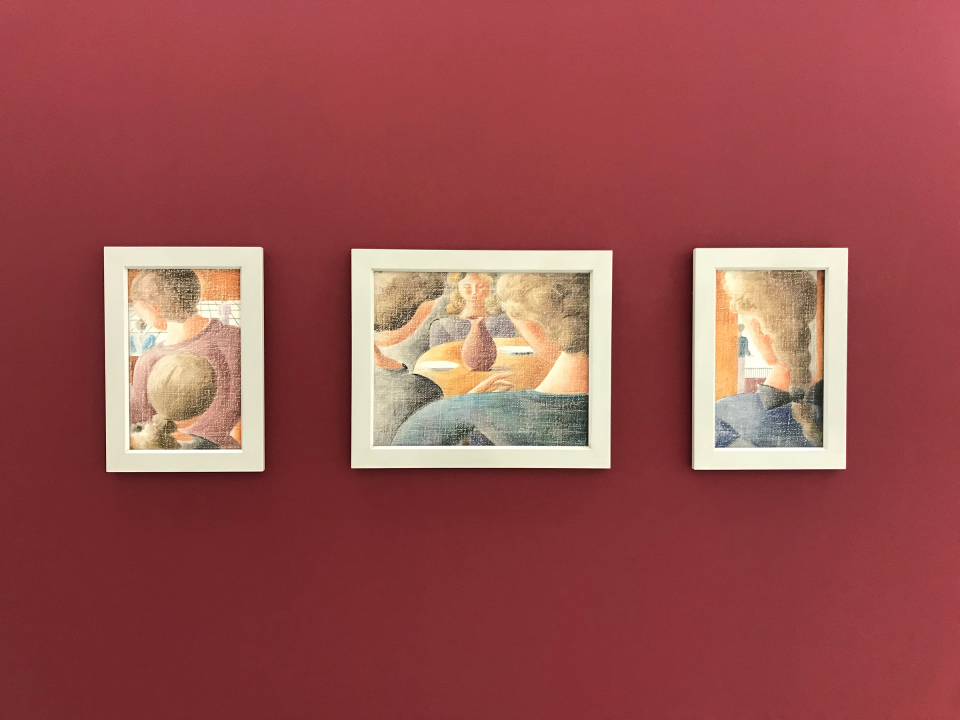

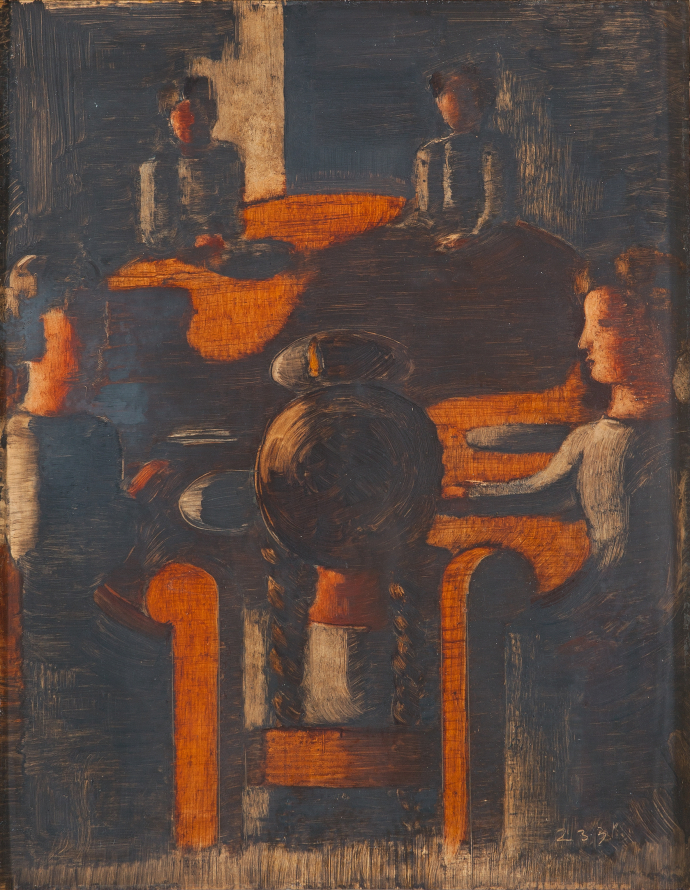
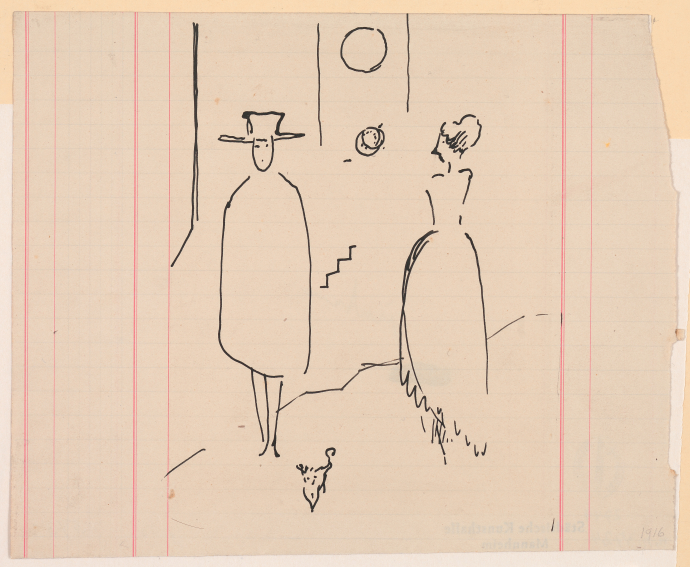

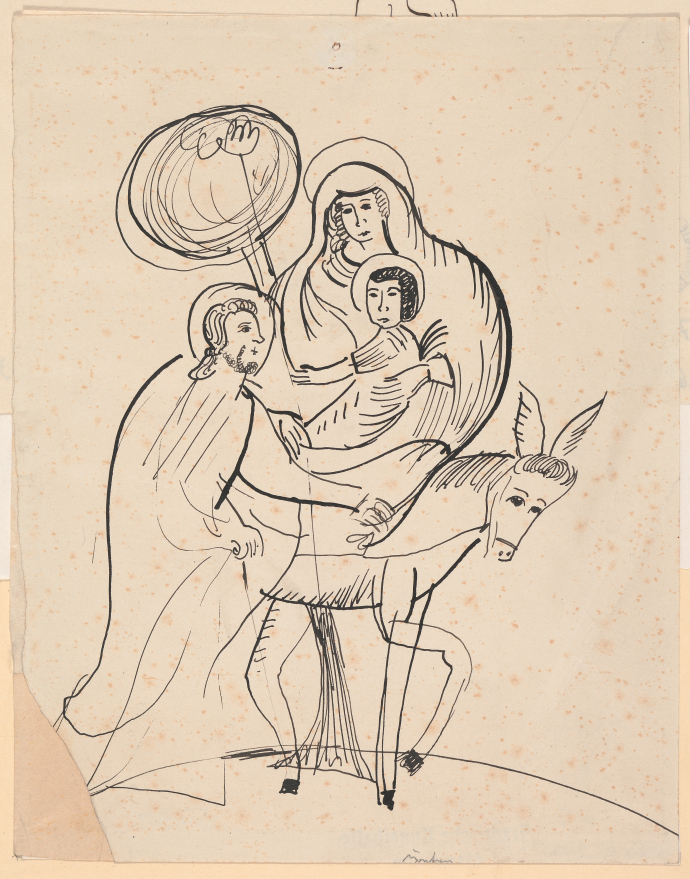
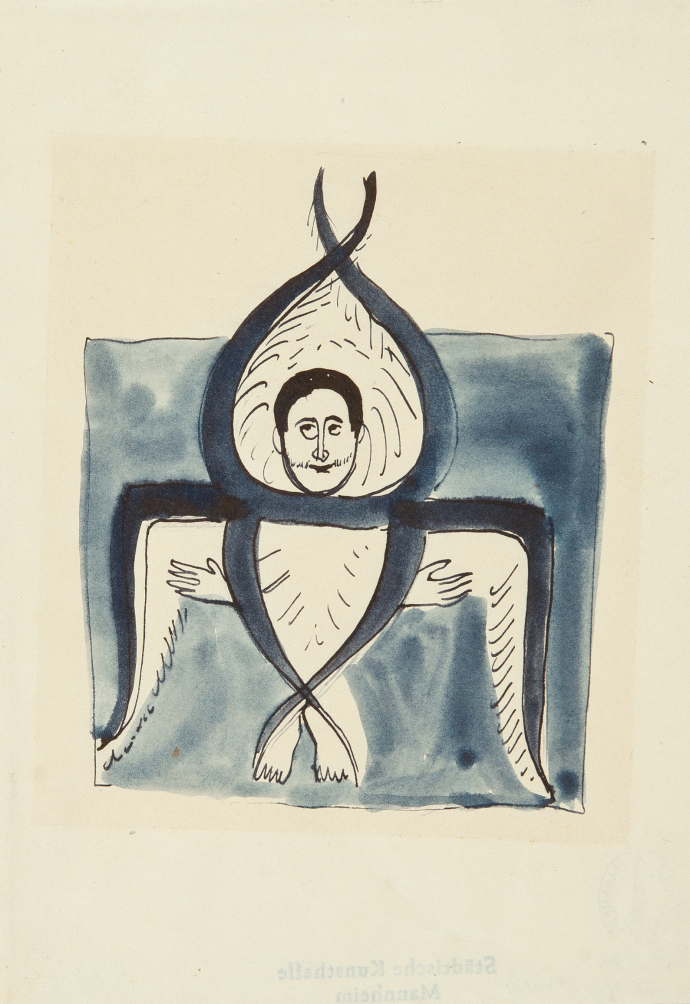
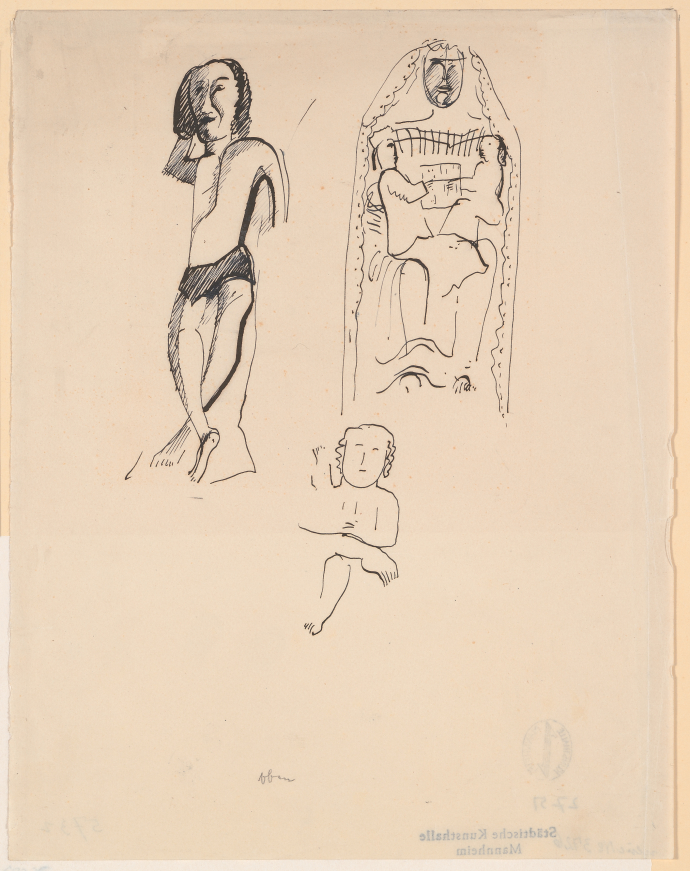
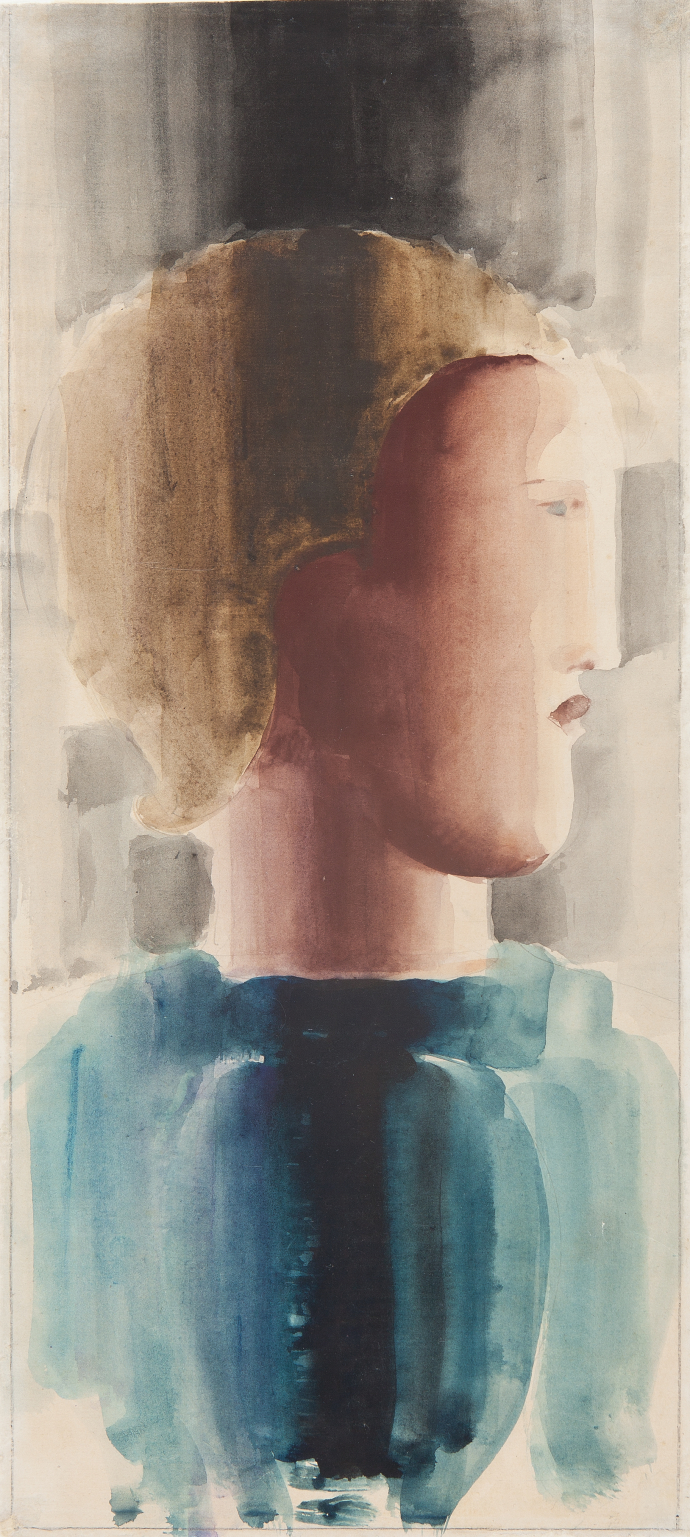

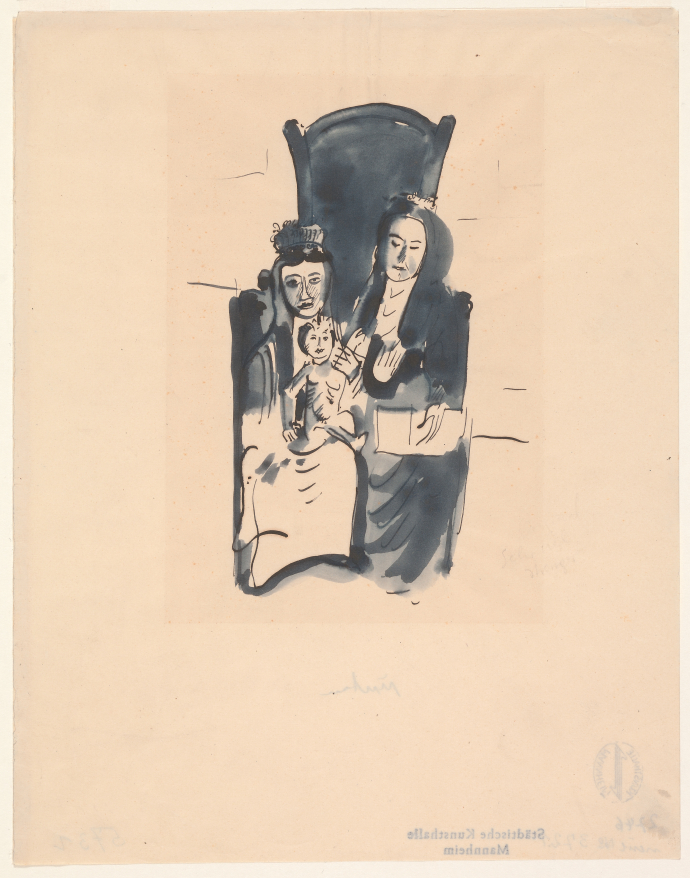
![Frau vom Rücken mit Mozartzopf Signatur: ohne: Beschriftung recto: u.re.: "3 [eingekreist, Fragment des roten Nachlassstempels]"](/sites/default/files/styles/700_breit/public/digitalisate/G3716_MOS_2017.jpg?itok=YhRNomjU)